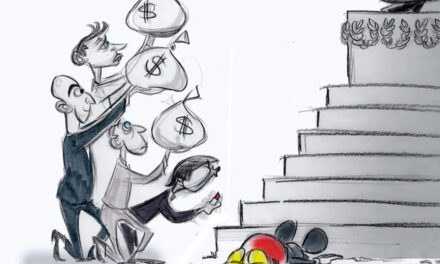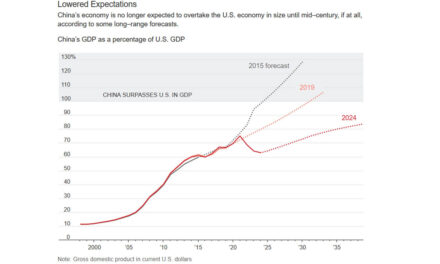
HORIST: Off the wall art.
I have decided to take a side trip away from politics – unless you consider the modern arts community to be a bunch of liberal Democrats. I do not – at least not entirely. On the edge of the modern arts community are a bunch of folks I have deemed in the past as arrogant (or insecure) fools, who are soon parted from their money – as the old saying goes.
I should first note, however, that I do enjoy the work of a lot of modern artists. This commentary is about a segment of that population who are just plain nuts – artists, galleries and buyers.
The latest example comes to us from Galerie Perrotin in Miami Beach – and an exhibit entitled Art Basel.
It appears that one contribution to the featured “art” was a somewhat ripe banana affixed to the wall with what appears to be an approximately eight-inch piece of grey duct tape. No, it was not an act of vandalism or three-dimensional graffiti. It was the “work” of Italian artist Maurizio Cattelan. He entitled it “Comedian.”
Whether the allusion was to the vaudevillian “top banana” or just implying the entire thing was a joke. It was a very expensive joke, however. Someone they described as an “art collector” purchased that piece of fruit for … are you sitting down? … $120,000.
The story does not end there. It seems that “performance artist” David Datuna proceeded to detach the banana and consume it. Yep! A $120,000 meal and he did not even leave a tip. Gallery officials took great umbrage to Datuna treating this valuable work of “art” as if it were feeding time in the monkey house of the Miami Zoo.
Datuna had himself videotaped and declared that his culinary masterpiece was “performance art” to be named “Hungry Artist.” He was not stealing Cattelan’s art but honoring it.
Imagine the poor person who forked out 120 grand for an artwork currently traveling through Datuna’s alimentary canal. But not to worry. It seems the purloining and ingesting of the banana had no effect on the value of the work.
According to Lucien Terras, director of museum relations, consuming the banana did not in any way affect the value of the artwork. He said that it did NOT detract from the overall integrity of the artwork. Maybe the buyer can take Datuna home and hang him on the wall until he gets his purchase back – the integrity of which Terras would affirm.
Terras – a master of the silver-lining theory — went on to explain that the banana was just an “idea” – and it still comes with a Certificate of Authentication. That is what the collector is paying for, says Terras. How would you like to pay $100 million for the “Mona Lisa” only to have it destroyed – but you would get to hang a Certificate of Authentication on your wall declaring that Mona once existed?
(As an aside. If you are ever caught in bed with someone other than your significant other, get hold of Terras to make the excuse to your spouse. The man is a genius.)
By the way, this is not an outlier for the modern art world. They do this silly stuff all the time – sometimes as publicity stunts and sometimes only God knows why.
During visits to these modern art museums, I have seen many examples of pretend art being peddled and purchased for big bucks in some of the most prestigious museums in America. In one case, I was confronted with a frameless canvas painted in solid black. It was what they call a minimalist piece. The fact that it would have been done by an 8-year-old with a paint roller is inconsequential. It has been declared as … art.
In another exhibit, I came across a circle of those sponge-like lava rocks that ring flower beds throughout the country. It was called … “Circle of Rocks.” In another area, the museum had dumped a pile of candy on the floor to which visitors could help themselves. A nice treat … but art?
Another artist exhibited a twin bed with the mattress hanging off, a floor lamp leaning on it, clothes strewn around the floor and a dresser with the drawer pulled out. It was at that moment that I realized my kids were true artists – not messy teenagers.
I was particularly taken by a painted orange lidless and featureless box made of three-quarter inch plywood. This was described as an absolute minimalist work of art because the artist never touched it. He hired a carpenter to go by some wood, nails and paint and construct the box – which transported to the museum without the help of the artist.
Some years ago, there was a California artist — whose name escapes me — who signed brooms he had purchased at some local hardware store – declaring that they had transubstantiated into art. He sold them for a handsome price even as he mocked buyers for being so stupid.
I understand temporary art – sidewalk chalk drawings, ice and snow carving, sand sculptures and the guy who wraps buildings in canvas. But this is not that.
But if you cannot beat them … then join them. In that spirit, I am considering taping an apple to the wall and calling it “The Big Apple.” A similarly taped dragon fruit would be called “Asia.” A bunch of grapes. “Vineyard.” I figure to spend less than $10 in the vegetable section of Publix to produce more than $1 million in art. I just need to find the guy who bought the banana.
I often wondered why ANYONE would pay so much money for such garbage. I really do not know, but I have a theory. I think these are low self-esteem individuals with more money than brains. They elevate the perceived value of a banana by paying an astronomical amount of money for something you and I would dole out 50 cents and eat it. It is their way of saying, “Look how rich I am … that I can pay all this money for such a worthless thing.”
Perhaps it would be performance art to videotape one of these characters flushing a couple hundred $100 dollar bills down a toilet. At least the symbolism would be perfect.
When considering this segment of the art community, one is likely to reflect on the story of the king with no clothes.
So, there ‘tis.


























Joe Gilbertson: where are you going with these threats? My free speech is facing intimidation, sometimes physical threats. Is this…
NOT BUSTED. You didn't have to say it. That is what I meant in the above post from me. But…
Just another ruse for taking jabs at Biden through alleged short comings of his. Ten days remaining in Biden's term…
I never said I WANT China to continue to own Panama. You made that up. First,I didn’t say it. Second.…
I absolutely do Not in any way, shape or manner fabricate ANYTHING you say. I do and will always tell…